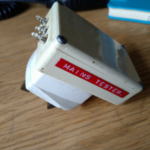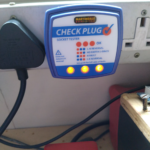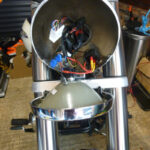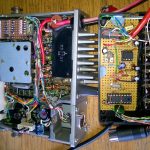As we will soon be taking a bit of a holiday , it occurred to me that I should charge my Kindle.
, it occurred to me that I should charge my Kindle.
I love reading novels and used to be a prolific reader back in the day: I would read at lunchtime whilst at work and I would always read for an hour in bed, before going to sleep. I would easily average a novel a week.
But, as I got older and circumstances changed and other interests came to the fore, I found less and less time for reading. Nowadays, when I go to bed, there is no chance of getting any reading done: I’m usually asleep before my head hits the pillow.
So, reading has become something that I only do nowadays, whilst on holiday.
It had a resurgence some years back when I was contracting and working away from home a lot and it was whilst mooching around the big fuck-off Tesco up in Lichfield (or Stafford – can’t remember exactly), that I espied the Amazon Kindle Gen 3. At 150 quid, it was a bit expensive, but I figured it would soon pay for itself and so I bought one.
Pay for itself, it did! And it revolutionised my reading habits, as I was now able to carry dozens of books around with me and dip in and out of them as I wished. Coupled with the built-in SIM card, I could even download books and newspapers etc. whilst on the move.
It’s fairly safe to say that I love my Kindle.. even though again, it only really comes out at holiday time nowadays.
And so, I went to take it off the shelf where it always sits and put it on charge.
Except… it’s not on the shelf.
I had a bit of a move around (tidy up) a couple of months back and must have put it somewhere else.
Gawd knows where. I have searched every inch and cranny. Twice. There’s no sign of it anywhere.
I have proved to myself many times in the past, that the best way for me to find a lost item, is to buy a new one – the lost one will magically reappear shortly after. And so, I am now the proud owner of the 11th generation Kindle: the Paperwhite.
Lovely device: smaller and lighter than my old one, with several improvements, twice as much memory and a slightly bigger screen.
And so, to put some books on there, in readiness. All my old content immediately transferred on to it as soon as I registered it on the Amazon website, but I wanted some new stuff.
Every so often, I’ll try a dip into the classics… usually with marginal success. Catcher In The Rye didn’t manage to capture my attention and To Kill A Mockingbird bored me such that I only managed about a third of it. But I’ve enjoyed a bit of Oscar Wilde (The Importance Of Being Ernest is, of course, my favourite Wildean tale) and I’ve decided that I should dip my toe into George Orwell’s canon, with 1984 and Animal Farm being the two most obvious to have a go at. And when you can download his complete works onto the Kindle for just 99p, it’d be daft not to give it a try.
But Science Fiction has always been my go-to genre and I have read most, if not all of the works from some of the most prominent authors: Clarke; Asimov, Bear, Niven.. etc. but I have also found a wealth of lesser-knowns inhabiting Amazon’s Sci-Fi section, and some of them are writing some really good stuff which can be bought relatively cheaply.
Whilst Sci-fi is my preferred read, it is a sub-section of that genre that I really enjoy reading: Time Travel. Traveling through time and all the quirky paradoxes that come with it, always leave an impression on me… if it has been well-written.
Many, many years ago (in a galaxy far, far away – actually, it was just the other side of town, but I digress), I read one such story. I still lived with my parents at the time, in our first house, so I guess it was about forty years ago. I remember finishing it and thinking what a brilliant and clever story it was. For some reason, about five years ago, it popped into my head and I fancied reading it again, but I couldn’t remember the title or the author. And after 35 years, I couldn’t really remember much of the plot. But I did remember bits of it. Sadly, typing “Cambridge Scientists Time Travel Particles” into Google and other search engines, threw up nothing. But then yesterday, whilst looking through Amazon’s list of books in the Sci-Fi Time Travel genre, it suddenly jumped out at me! How excited was I?
Very.
Timescape, by Gregory Benford, if you’re interested.
It’s now on the new Kindle, ready to be devoured as soon as Holiday Mode is activated next week.
I’ll let you know if I enjoy it as much the second time round.
I’ll also let you know if the old Kindle ever turns up!
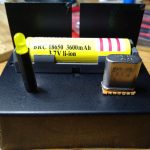 At one of a our nerdy amateur radio rallies a couple of months back, a mate of mine bought a box of old crystals.
At one of a our nerdy amateur radio rallies a couple of months back, a mate of mine bought a box of old crystals.




